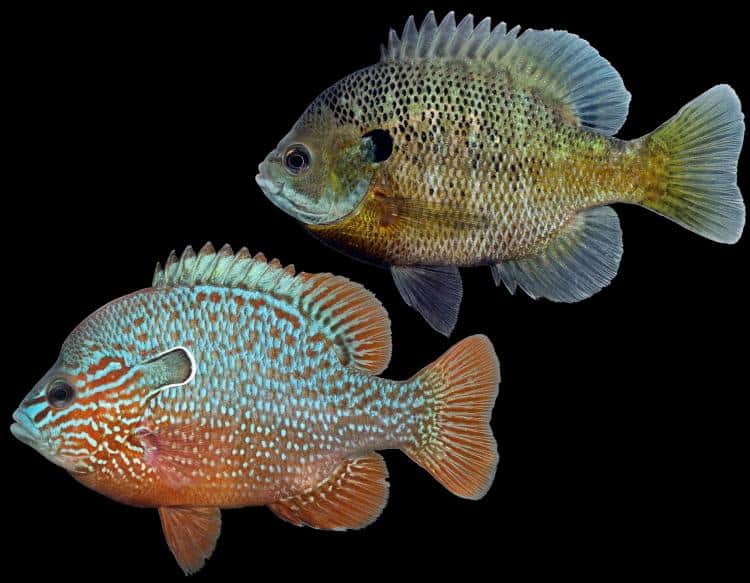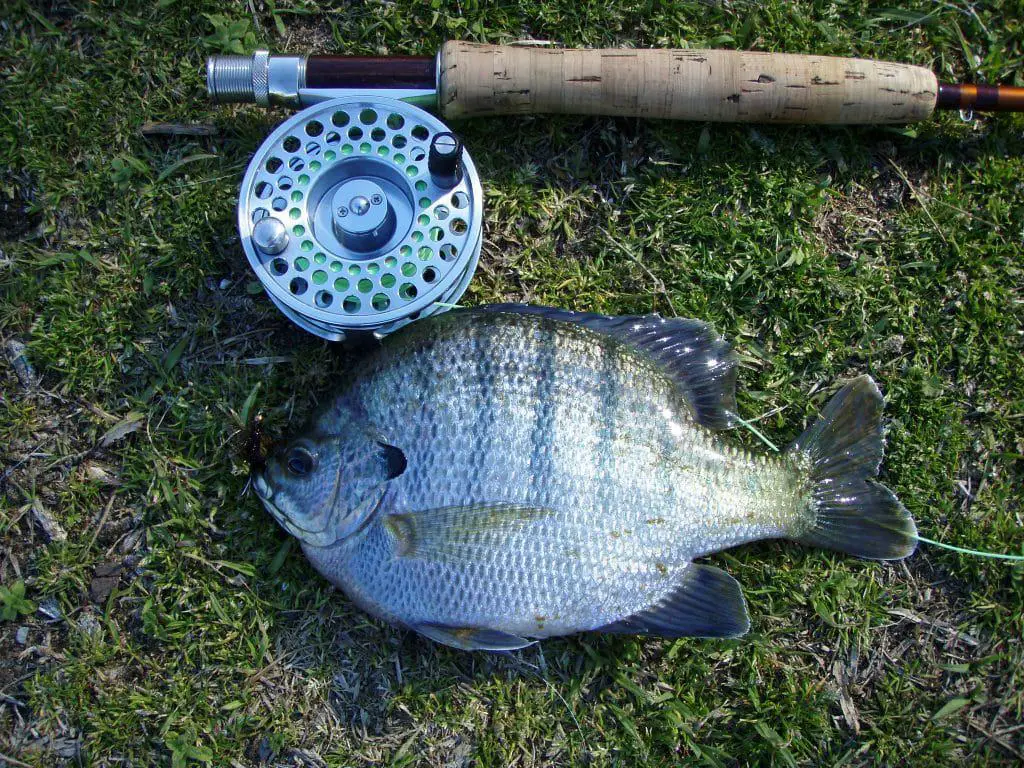
Fishing for panfish is always fun. They aren’t hard for beginners to catch, and experts still enjoy their unique taste. Certainly, the fun won’t complete without bragging about the fish you’ve just landed.
However, you wouldn’t want to brag with the wrong term, right? More times than not, I find a lot of anglers getting confused between sunfish and different panfish species.
That’s why I wrote this article. We’ll take a look at what every panfish species looks like, including your beloved sunnies. Let’s see!
Table of Contents
Panfish, a Term Rather Than a Species
Panfish is a pretty common term between the anglers, especially North Americans. We use it to refer to any fish small enough to cook in a regular frying pan, hence the name.
Although some anglers use sunfish and panfish interchangeably, they’re not the same.
Sunfish are one of the species small enough to be considered panfish. However, the panfish category includes other species that are notably different from sunfish.
In other words, all sunfish are considered panfish, but not all panfish are considered sunfish.
For the sake of simplicity, we’ll only discuss the three major panfish species besides the sunfish. These include bluegills, perches, and crappies.
So, What Is a Sunfish?
Technically speaking, sunfish refers to a bunch of small species like the blue-spotted sunfish, longear sunfish, etc.
However, if you’re fishing in North America, you’ll most likely catch the pumpkinseed sunfish, so that’s the one that we’re looking to discuss.
Appearance: Red Gills and Spotted Body
Pumpkinseeds have an absolutely characteristic olive-green spotted appearance, similar to a plate full of pumpkin seeds.
Their mouths are incredibly small relative to their eyes and body. Neither of their jaws can extend to their eyes.
If you caught a fish and you can’t decide whether it’s sunfish, look at its gill covers. They’ll always be dark-colored with a white rim and a red spot on the tip.
Furthermore, adult pumpkinseeds have elongated pectoral fins that reach their eyes when folded forward. However, don’t depend on this feature since it can vary according to age.
On average, pumpkinseeds can measure around 4-6 inches and weigh less than 1 pound.
Behavior: One of the Most Beloved Species
Sunnies are suitable for every angler, however experienced he is. Many kids begin their angling adventure by catching one of them. It’s always delightful to catch this colorful species as your first game.
Despite having small mouths, they’ll eagerly bite on anything small enough to engulf. They like to fight back, but they’ll mostly lose due to their small bodies.
If you want to find them in groups, search in warm and calm water. They like to swim in clear water near the shore, which makes them even easier to catch.
What About Other Panfish?
To make sure you’re following, I mentioned before that panfish is a big category that includes sunfish, bluegill, perch, and crappie.
So, now that we covered sunfish, we can proceed with identifying the rest.
Bluegills

Bluegills resemble pumpkinseeds to a large extent. That’s why a lot of anglers get easily confused between them.
Appearance: Closely Related to Sunnies
To easily tell them apart, look at the gill cover. In pumpkinseeds, it’s dark with a red dot and white margin, as I mentioned before. But bluegills have strictly dark-blue gills, without any other features.
Moreover, bluegills lack the color variations found in pumpkinseeds. Their scales are usually colored in blue or turquoise, which contrasts well with their yellow bellies.
Aside from these two features, nothing else is different. They have a small mouth and long pectoral fins relative to their bodies.
Behavior: Quite Easy to Catch
To catch bluegills, search for underwater vegetation, as they like to seek cover there. They’ll mostly bite on lures with vibrant colors like yellow, orange, red, etc.
Anglers prefer them over sunnies because their bigger size is more challenging. They usually measure between 6 and 10 inches, with a maximum weight of 3 pounds.
Perches
You’ll instantly know you caught a perch by noticing its two large dorsal fins. It’s typical to find the first fin with spines, while the second is usually smooth. In adult fish, you’ll find their tail to be notably thin compared to their thick bodies.
Yellow perches, the most common type, have greenish-yellow scales. They look like tiger barbs with the multiple black vertical bands extending from their backs to their bellies.
White perches, on the other hand, are colored in silver-white without any other distinctive features.
Both species reach around 10 inches in length and weigh about 3-4 pounds.
Behavior: Fun to Catch
Every angler enjoys catching perches. Their large size makes them tasty fares that are challenging to catch.
Due to their hardy nature, they can be found in a lot of different habitats. You can catch them during the winter when you’re ice fishing. Still, they can be found in shallow water during warmer climates.
They generally prefer clear freshwater, but they also like hiding in muddy and somewhat salty areas.
Just like their cousins, their voracious appetites push them to bite on almost any lure that can fit inside their mouths.
Crappies
Between their panfish relatives, crappies have the largest mouths. You can easily spot them via their absolutely large dorsal, caudal, and anal fins.
Their bodies have a characteristic mottled appearance with black speckles over a grayish background. You might see a deeply-dark spot on the superior part of their gill cover, but it might not always be that clear.
Behavior: Easy to Catch
Generally speaking, crappies prefer cool and shallow waters. That’s why they’re quite popular with ice anglers.
Just like their cousins, crappies don’t usually pull up a fight. They eagerly head to any sparkling lure you use, making them perfect fares for young anglers.
To Sum Up
Can we say that a sunfish is a panfish? Yes. On the other hand, a panfish could be bluegill, crappie, perch, or sunfish. Therefore, sunfish and panfish shouldn’t be used interchangeably by all means.
Sunnies are characterized by the red dot on their dark gill cover. Bluegills share the same dark gills but without any additional colors.
You’d easily know a perch by its two large dorsal fins and the black vertical straps. Crappies, on the other hand, are well known for their large mouths and mottled bodies.
All in all, panfish are absolutely fun to catch for beginners and experts alike. Whatever species you’ll catch, you’ll enjoy delicious fare at the end of the day.
